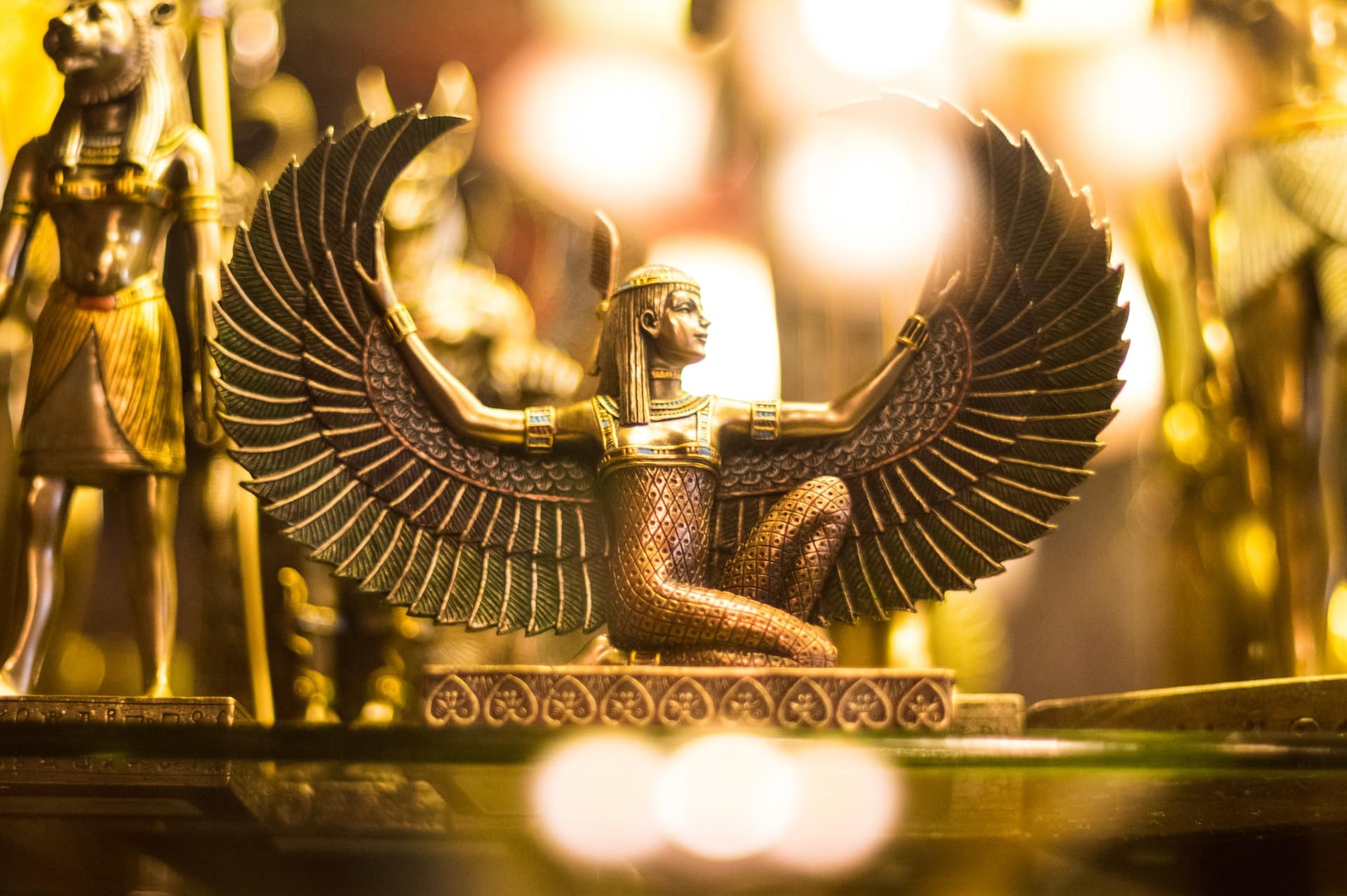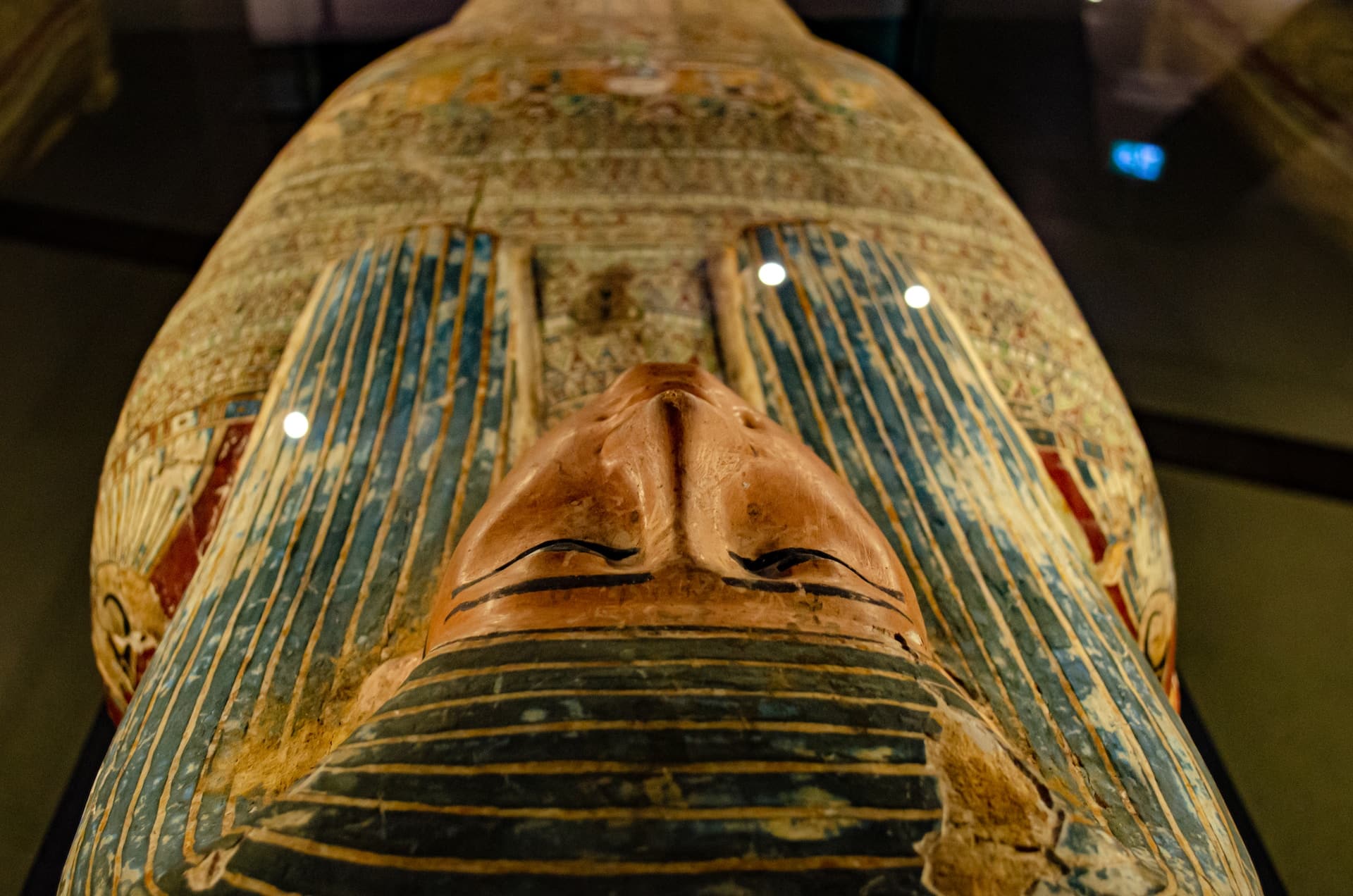Unlocking Secrets of the Afterlife: The Influential Role of Egyptian Funerary Rites in Sarcophagus Art

In Antiquity, Egyptian funeral rites occupied a preponderant place in the society and culture of this ancient civilization. These ceremonies were considered moments of transition where the deceased passed from earthly life to the afterlife. Among the central elements of these rituals were sarcophagi, true artistic masterpieces that reflected both the Egyptian belief in the immortality of the soul and the Egyptian passion for aesthetics.
The Egyptians believed in the existence of life after death and placed great importance on the preservation of the deceased body. Egyptian funeral rites were therefore designed to preserve the integrity of the body and allow rebirth in the afterlife. The sarcophagus, a true protective cocoon, played an essential role in this quest for immortality. Carved from noble materials such as wood, stone or metal, it was decorated with rich religious and symbolic decorations.
The art of Egyptian sarcophagi was intimately linked to the religion and funerary symbolism of this civilization. Every detail, every engraved pattern had a precise meaning. There were often representations of gods and goddesses, such as Osiris, the god of death and resurrection, or Anubis, the god of the dead. These deities were supposed to accompany the deceased on their journey to the afterlife and protect them from the dangers encountered on the way. The hieroglyphic inscriptions on the sarcophagus described the prayers and magical formulas intended to ensure the protection and salvation of the soul of the deceased.
Each sarcophagus was unique, reflecting the personality and social status of the deceased. Thus, pharaohs and members of the royal family were entitled to larger and more richly decorated sarcophagi than ordinary citizens. The sculptures and paintings that adorned these works of art demonstrate the Egyptians’ mastery of artistic techniques. The bright colors used, such as blue, red and green, symbolized life and resurrection, while the geometric patterns and mythological scenes represented the beliefs and values of this civilization.
Beyond their religious and artistic aspect, Egyptian sarcophagi were also precious witnesses of daily life and funerary customs of the time. The scenes depicted on the sarcophagi provided insight into the social, economic and political life of ancient Egypt. There we could see farmers, artisans and even representations of court life. These details tell us about Egyptian society and allow archaeologists and historians to better understand this fascinating civilization.
Today, Egyptian sarcophagi are treasures carefully preserved in museums around the world. Their preservation and study continue to fascinate researchers and art lovers. These exceptional works of art remind us of the importance of Egyptian funeral rites in ancient society and demonstrate the Egyptians’ passion for aesthetics and spirituality. Their symbolic and historical value make them unique testimonies of our common past.

The conception of Egyptian mummies: between science and beliefs
The fascinating art of sarcophagi, testifying to the grandeur of Egyptian funerary rites, would not have been complete without one of the most iconic elements of this civilization: mummification. This complex and sacred practice, deeply rooted in Egyptian beliefs, represented a vital link between the world of the living and the afterlife.
At the heart of the mummification process was the Egyptian belief that preservation of the body was essential to ensure eternal life. For the Egyptians, the soul, or “Ka”, had to return to the body after death to find rest and renewal. Thus, a well-preserved body guaranteed a favorable reception of the Ka.
One of the crucial steps in this delicate process was removal of internal organs, which were likely to decompose quickly. These organs were then kept separately in canopic vases, each vase being dedicated to a particular god. The brain, oddly enough, was not preserved, as it was not considered essential.
After that, the body was carefully dried using natural salt, called natron, which absorbed all the moisture. This stage could last up to 40 days. Once dried, the body was smoked with resins and herbs to disinfect it and give it a pleasant aroma.
The body was then wrapped in linen bandages, often inserted with amulets to protect the deceased. These bandages were coated with resin to ensure waterproofing and long-term preservation.
What’s interesting to note is that mummification wasn’t just for royalty or the elite. Although the methods and materials used varied depending on social status and wealth, many common Egyptians were also mummified, testifying to the universal importance of this belief.
Through the ritual of mummification, we can grasp the ingenuity and precision of the ancient Egyptians. It was a remarkable fusion of scientific skill, deep spirituality and meticulous attention to detail. These mummies, when discovered, offer valuable clues about the living conditions, diseases, diet and even trades of the time, allowing today’s researchers to delve deeper into the daily life of this mysterious civilization.
The spiritual significance of Egyptian amulets in the mummification process
When we talk about the mummification ritual of Egyptian civilization, it is essential to mention the amulets, these small objects loaded with meaning and beliefs, which were often inserted between the bandages of the deceased. They had a primordial importance in Egyptian belief, because they served as protectors of the deceased in their journey to the afterlife.
These amulets were usually made from various materials, such as earthenware, wood, semi-precious stone, or even metal. Each amulet had a specific shape that corresponded to its function. For example, thebeetle-shaped amulet, representing the sun god Khepri, symbolized rebirth and was often placed on the heart of the deceased.
Another one common amulet was that of the Ankh, symbol of life. It was often held by the gods in artistic representations, recalling their power to give life. In the funeral context, the Ankh ensured eternal life for the deceased.
L’amulet of the Djed pillar, associated with the god Osiris, represented stability and sustainability. It was often used to ensure that the deceased would be well grounded in the afterlife, enjoying an undisturbed eternal existence.
It is also interesting to note that the choice and arrangement of the amulets was highly strategic. They were carefully chosen based on the needs and beliefs of the deceased and were placed in specific locations on the body to maximize their effectiveness.
But why was such importance placed on these seemingly minor objects? In the Egyptian mind, the afterlife was filled with dangers and challenges. Amulets were seen as powerful protectors, capable of guiding and defending the soul of the deceased against potential threats. They also served as a means for the deceased to show their devotion to certain gods and benefit from their protection in return.
Comments
Leave a comment